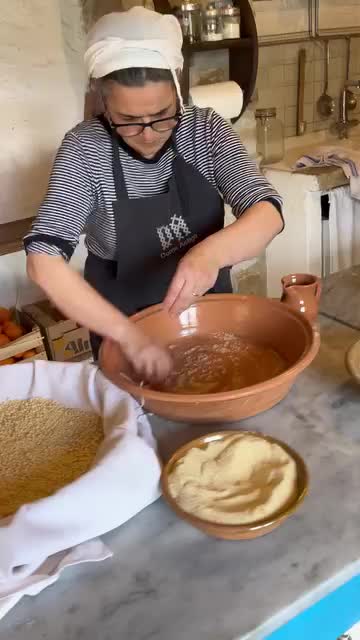Copy Link
Add to Bookmark
Report
HOMEBREW Digest #0924

This file received at Sierra.Stanford.EDU 92/07/16 01:24:55
HOMEBREW Digest #924 Thu 16 July 1992
FORUM ON BEER, HOMEBREWING, AND RELATED ISSUES
Rob Gardner, Digest Coordinator
Contents:
Reminder: Digest Backlog (rdg)
Re: Storage of kegged beer (Larry Barello)
Re: oats and other adjuncts (Larry Barello)
Wyeast Bavarian Wheat Yeast (Brian Bliss)
Re: highly modified malts (Larry Barello)
Re: Do specialty grains need to be mashed? (Brian Bliss)
Re: how cold is too cold? (Brian Bliss)
Ale Yeast (fjdobner)
re: Oats (John Hartman)
caulking (BLACKG)
Lottery (Phoebe Couch)
Rousing Yeast (Alan Mayman)
Silicone & Weizen (what else) (chris campanelli)
Re: MALTMILL GIVEAWAY (Richard Foulk)
Coffee in stouts (Drew Scott)
Wit Beers in Texas? ("Spencer W. Thomas")
Long Trail Ale (GC Woods)
Canned fruit (John DeCarlo)
Review Request for "On Tap" (John DeCarlo)
kegging (donald oconnor)
raspberry beer (Mitch Gelly)
Chlorine and stainless steel (Jim Larsen)
adjunct grains & mashing (Tony Babinec)
Campden Tablets (David Resch)
kegging question (Scott Murphy)
Keeping Extract (Keith Winter)
Clove taste and warm kegs. ("JOSEPH V. GERMANI")
Oats, Bitter Dregs, Pins ("Rad Equipment")
Oats, Bitter Dregs, Pins Time:7:48 AM Date:7/10/92
mashing oats (mcnally)
Yellowing Hops (Carl West)
Bottling Temps and Times for Ales (gordon)
mashing specialty grains (more) (Brian Bliss)
Re: Homebrew Digest #921 (July 10, 1992) (BOB JONES)
sugar/invert sugar (Carl West)
Malt Extract (Brian Bliss)
Blueberry Beer, Keg Scratches ("John Cotterill")
Oatmeal (more) (Brian Bliss)
false-bottom support (Houck)
re: goldfinch (dave ballard)
Send articles for __publication__ to homebrew@hpfcmi.fc.hp.com
Send UNSUBSCRIBE and all other requests, ie, address change, etc.,
to homebrew-request@hpfcmi.fc.hp.com
Archives are available from listserv@sierra.stanford.edu
(Send a HELP message there for instructions, etc.)
**Please do not send me requests for back issues!**
*********(They will be silenty discarded!)*********
**For Cat's Meow information, send mail to lutzen@novell.physics.umr.edu**
----------------------------------------------------------------------
Date: Mon, 13 Jul 92 12:41:46 MDT
From: rdg@hpfcmi.fc.hp.com
Subject: Reminder: Digest Backlog
Just a reminder: If you have submitted an article for publication,
don't worry if you don't see it here immediately. Articles are
put into the digest in the order they arrive.
Rob
------------------------------
Date: Thu, 9 Jul 92 08:56:45 PDT
From: polstra!larryba@uunet.UU.NET (Larry Barello)
Subject: Re: Storage of kegged beer
John wonders why kegged beer won't store for a year at room
temp.
I have never wondered about it. I assumed that kegged beer, under
pressure, would last at room temp just as long as bottled beer.
Although I have not stored beer in kegs at room temp (68f) for
long periods, I have had some beers in the keg at 48f for nearly
a year with no undesirable results. I have pulled kegs from the
refer for months at a time (partial kegs) without any ill effects.
If anything is different about kegs, at least for me, it is that my
keg tends to be the secondary so I have a fair amount of yeast in
the bottom (say, 1/8 cup or so). It is possible with large amounts
of yeast that autolysis could set in over a long period of time.
Bottom line for me is that I ain't gonna worry about it.
Cheers!
- Larry Barello
------------------------------
Date: Thu, 9 Jul 92 16:41:08 PDT
From: polstra!larryba@uunet.UU.NET (Larry Barello)
Subject: Re: oats and other adjuncts
Technically, steel cut oats are RAW and need to be cooked to liberate
the starch. Probably what happens is that they are chopped up so fine
and the enzymes floating around in a 2 hour mash (:-) have an opportunity
to liquify the starch and conversion happens.
All other forms of oats (flat ones, that is) have been pre-cooked in
the squishing process. This also holds true for barley, wheat, tritical,
etc. They don't need ot be cooked.
Also, regarding mashing of specialty grains. From a technical point
of view all crystal malts (down to cara-pils) have already been "mashed"
in the husk. Toasted malts (vienna->black patent) have not. Those
that have not may dump starch into your brew which might cause a
warm haze (worse when cold).
As a point of reference: I have easily mashed 7lb of pale malt (us 2-row)
and 1lb each of rolled oats and roast barley to make a fine stout that
has no haze whatsoever. Granted, you need a strong light to tell! Oh,
to complete the recipe: 1.25oz of chinooks for 60min. Yum, yum.
Cheers!
- Larry Barello
------------------------------
Date: Thu, 9 Jul 92 20:18:57 CDT
From: bliss@csrd.uiuc.edu (Brian Bliss)
Subject: Wyeast Bavarian Wheat Yeast
>> I enjoy the strong "clove like" flavor of certain weiss beers yet I haven't
>> been happy with the results of kit weiss beers using the Wyeast wheat strain.
>
>Has anyone else noticed that the Wyeast #3056 (Bavarian wheat) seems to be
>less "clovey" and rich since they changed their packaging? I make weizen
>quite a bit, and lately my batches just haven't been as rich as they used
>to be. Perhaps Jeff Frane knows something about this.
What temperature did you ferment at? I have heard that keeping the
temp @ 70-75 F favours the S. Delbruckii more that lower temps, which
favour S. Cervasae (Ale yeast, however you spell it). My last wheat
beer use Wyeast Bavarian Wheat yeast in the new packaging, and it's
plenty "clovey". The temp in the basement was around 70F during the
major portion of the fermentation.
bb
------------------------------
Date: Thu, 9 Jul 92 16:25:35 PDT
From: polstra!larryba@uunet.uu.net (Larry Barello)
Subject: Re: highly modified malts
Cush Hamlin writes:
>Now the question: has anyone out there experimented with USA versus
>English malt, and if so can you describe the difference in character
>they give to a brew?
>
>The Brewmaster at Sherlock's said forcefully "you CANNOT make english-style
>brews using USA malt." Is it the highly modified malt that gives their
>brews their smooth character, or is it brewing skill, etc. etc....?
Case in point: the IPA recipe I presented in the HBD yesterday: I madi
it first with Marris Otter malt from Liberty and a second time with
Great Western Malting Pale Malt (some mix of klages and harrington).
Although the first rendition seemed a bit maltier, in fact most people
couldn't really notice the difference. I think that the high hopping
level of the IPA + the dry hopping might have masked some subtle malt
charactoristic.
Oh, the GWM versions did better in club tasting than the English malt
versions.
One thing about true englishmalts, they are kilned higher than US malts
and thus are a bit darker. I think that compensating with 10-15% low
Lovibond crystal (say 16L) would largely mask the difference both
in color, body and malt character.
Cheers.
- Larry Barello
------------------------------
Date: Thu, 9 Jul 92 20:40:39 CDT
From: bliss@csrd.uiuc.edu (Brian Bliss)
Subject: Re: Do specialty grains need to be mashed?
> As I understand it, specialty grains do not need to be mashed.
Personally, I think all grains need to be mashed. For a partial
mash, If you're just using .5-1 lb of crystal malt or other specialty
grain, you can just add an oz. or two of amylaze enzyme and leave the
wort at 150F for 20 minutes (based on experience this seems to work).
Otherwise, you need to have 50% lager malt (or more pale ale than that)
to provide the appropriate enzymes for starch conversion. (as per
TCHOHB, aka. Miller).
Make quite certain that you get as much grain as possible out before
boosting the temp above 170F, or you will be rewarded with an astringent
taste that takes a long time at cold temps to mellow.
Many people think that It's alright just to steep the grain, and
you're more than welcome to disagree with me. It certainly
doesn't ruin the beer if you do (steep the grain).
bb
------------------------------
Date: Thu, 9 Jul 92 20:55:17 CDT
From: bliss@csrd.uiuc.edu (Brian Bliss)
Subject: Re: how cold is too cold?
>Why didn't my lager ferment after nearly a month in the fridge? I suspect
>that the temperature was around 38-42 degrees in there? Is this too cold?
>It's sittin' on the counter now, having fermented at about 70f for a week,
>and is finally ready to bottle. Glad I took a "final" gravity after I
>took it out of the fridge.
It depends upon the yeast. I sucessfully fermented my first all-grain
batch at 33F in my fridge, using Wyeast Munich Lager yeast. I took
it our after 3 months, and the SG had fropped from 1.077 to 1.027.
I let sit sit a room temp another week, and it dropped to 1.020.
BTW, the sparge got stuck, I broke my putter trying to get it unstuck,
a lot of husk material made it though the grain bed, and I only wound
up with 3 gal of 1.077 wort from 15 lbs of grain. I added polyclar towards
the end of the primary (in the fridge) to help settle out the tannins,
and it probably was one of the best beers I've ever made :-)
Other lager yeasts don't like it that cold, I guess...
bb
------------------------------
Date: Thu, 9 Jul 92 20:57 CDT
From: fjdobner@ihlpb.att.com
Subject: Ale Yeast
In the last week I have brewed a Cherry-Honey-Weiss beer from grain.
My recipe looks like this:
6# 2 Row English Pale Malt
4# Malted Wheat
Gypsum (for adjusting PH)
Irish Moss (Clarity)
10.5# Cherries
1# Honey
1 oz Saaz Hops - Boiling
1/4 oz Saaz Hops - Finishing
I mashed using 10 qts at 140 F strike heat for a protein rest at 130 F.
Then added an additional 5 qts at 200 F to bring to a starch conversion
at 150 F raised to 158 F, with a mash-out at 168 F. Sparged with 5 gallons
of water at 168 F recovering over 6.5 - 7 gallons. Boiled for two hours.
Chilled down to about 70 F, pitched yeast. OG=1.040 at 70F. After two
days FG=1.060 and still bubbling. I racked off the trub (a little late
granted) onto 10.5# of frozen/macerated cherries. In addition, I added
1# of honey (boiled with about 1 pint of water). After this point, I saw
no more activity w.r.t. fermentation. I tried adding some yeast energizer
and extra packet of dried yeast with no success. I believe at least two things
could have happened:
1. The frozen cherries chilled the fermenting liquid down to a temperature
level below that where ale is productive or active.
2. The freezing of cherries does not thoroughly eliminate the bacteria and wild
yeasts that I had tried to freeze out.
I had sampled some opinion from several people on the digest and many said that
freezing the fruit is an effective means of killing the un-wanteds. Has
anybody else got any experience or advice? The batch does not taste bad
although the cherry taste is none to prominent.
Frank Dobner
PS; I must say that these whole grain batches sure make me enjoy extract brewing
since I finished this one at 3:15 am. I slept happily though.
------------------------------
Date: Thu, 9 Jul 92 08:58:49 PDT
From: hartman@varian.varian.com (John Hartman)
Subject: re: Oats
In digest #919, Russ talks about brewing with Oats and Flaked Barey and
Wheat. Russ, I'd like a slight clarification regarding your treatment of
oats. Are you saying that oats, such as Old-Fashioned Quaker
Oats, should be boiled prior to mashing?
My understanding was that flaked grains were pressed between
hot rollers which ends up cooking the grain. As a result, flaked
barley does not need special treatment prior to the mash. I.e.,
just add it along with the rest of the dried grains.
I'm not a true stout drinker but my girlfriend is. So I've been
trying to make a good oatmeal stout. I used 1 lb. uncooked
Quaker Quick Oats last time. It imparted little (no?) flavor
or character to the beer. This time I used 1 lb. Quaker Old-Fashioned
Oats which had been cooked to a nice gelatinous goo. Am I on the
right track or would you suggest I do it differently? Also is
this the right choice for oats, i.e., Old-Fashioned Oats?
Thanks in advance,
John hartman@varian.varian.com
------------------------------
Date: Fri, 10 Jul 92 13:45 +1000
From: BLACKG@topaz.ucq.edu.au
Subject: caulking
In Australia there is a product used in the food and hotel industry
called "Stag" which is used for caulking, sealing, etc. It is non-toxic
but should be kept away from naked flames. I have used it to seal around
the tap of my fermenter (plastic). It doesn't affect the taste, it works,
and its not expensive. Its normally available in a tube weighing about
100 grams.
I'll provide more details on it next week.
Graham Black
Rockhampton, Queensland, Australia
------------------------------
Date: Thu, 9 Jul 92 20:17:42 PDT
From: ithaca!amber!phoebe@uunet.UU.NET (Phoebe Couch)
Subject: Lottery
Here is my lottery ticket for the maltmill.
P
------------------------------
Date: Thu, 9 Jul 92 15:57:37 -0400
From: Alan Mayman <maymanal@scvoting.fvo.osd.mil>
Subject: Rousing Yeast
Howdy,
Once before, a long time ago, I had enquired about how one goes about
rousing yeast. The response I received suggested vigorous agitation
of the brew for several minutes.
Alas, Monday night I finally admitted to myself that my fermentation
had stuck & tried this method out with no success.
Is the agitation supposed to introduce oxygen? I hated the idea of
stirring up all that gack on the bottom, would racking violently be
a better alternative? Please help, I hate wallowing in ignorance :(
- Thanks in advance to all
Alan
------------------------------
Date: Thu, 9 Jul 92 19:33 CDT
From: akcs.chrisc@vpnet.chi.il.us (chris campanelli)
Subject: Silicone & Weizen (what else)
Silcone Sealant:
What's all the fuss? There ARE food-safe, FDA approved silicone
sealants available at damnnear all hardware stores. If you aren't
certain which is best, go to the hardware store and ask one of the little
guys with the name tag on.
Weizen:
Not all weiss beers are make with a 2-yeast blend. Chicago Brewing
Company produces a beer called Heartland Wheat. For all practical
purposes it is a filtered weiss beer. CBC uses a single cell weiss beer
yeast. Yes, single cell. It is an industry yeast and goes by the name
of Erlangmeyer 128 or something like that. The beer has that often
sought after clove-ester-spiciness rather predominantly.
chris
PS. I already have a JS Maltmill. So there.
------------------------------
Date: Fri, 10 Jul 92 00:33:44 HST
From: richard@pegasus.com (Richard Foulk)
Subject: Re: MALTMILL GIVEAWAY
>It's a nice offer, Jack, but don't you think it might clog the HBD for a
>while with nuisance articles just out to be the 100th, like this one?
>
I give up. What's this all about? Another clever try at finding an
`acceptible' way to use the net for commercial purposes?
- --
Richard Foulk richard@pegasus.com
------------------------------
Date: Fri, 10 Jul 92 09:28:44 EDT
From: drew@scorpio.ic.cmc.ca (Drew Scott)
Subject: Coffee in stouts
Does anyone have any experience with adding coffee to stouts?
How much should be added so that there isn't an overpowering
coffee flavor (assuming a 5 gallon batch) - just an ounce or two?
And is it best to leave the beans whole?
thanks,
pds
------------------------------
Date: Fri, 10 Jul 92 09:34:04 EDT
From: "Spencer W. Thomas" <Spencer.W.Thomas@med.umich.edu>
Subject: Wit Beers in Texas?
C.R. Saikley writes:
> Meanwhile, Mr. Celis decided that he'd had enough of his battles with
> Interbrew. Like so many Europeans before him, he has sought refuge in
> the US. He's brewing in Austin and his beers are available there. They
> will soon become available in California, and other selected markets.
> Let's hope he's not *too* successful this time.
Or that he's learned the lesson of dealing with success and the big
guys, and will manage to not let the same thing happen again.
=Spencer W. Thomas HSITN, U of Michigan, Ann Arbor, MI 48109
spencer.thomas@med.umich.edu 313-747-2778
------------------------------
Date: 10 Jul 92 09:23:51 EDT (Fri)
From: GC Woods <gcw@garage.att.com>
Subject: Long Trail Ale
Following the thread from some issues back - for you East Coasters who
like to try a "West Coast" type ale (IMHO) - try Long Trail Ale from the
Mountain Brewers in Vermont. My local liquor store in Chester, NJ (Shoprite)
just got it in and it reminds me of "West Coast" type micro ales.
The assistant manager does a great job of getting good brews in -
including some lambics and resonable prices.
------------------------------
Date: Friday, 10 Jul 1992 10:00:41 EDT
From: m14051@mwvm.mitre.org (John DeCarlo)
Subject: Canned fruit
I normally use fresh fruit, purchased at farmer's markets, but
got a good deal on some canned cherries designed for pie filling.
There are no food colorings, preservatives, or additives in these
cans, just cherries and sugar. I presume there isn't too much
sugar since they are supposed to be sour cherries for a sour
cherry pie.
So, I am really tempted to use these to make a cherry weizen, but
want at least some sort of "I tried this and it turned out OK"
story before hand, if possible. You know, warm fuzzies and all
that.
Thanks in advance.
Internet: jdecarlo@mitre.org (or John.DeCarlo@f131.n109.z1.fidonet.org)
Fidonet: 1:109/131
------------------------------
Date: Friday, 10 Jul 1992 10:00:27 EDT
From: m14051@mwvm.mitre.org (John DeCarlo)
Subject: Review Request for "On Tap"
>From: rjsmith@mmdis01.hq.aflc.af.mil (Randy J. Smith)
>I got a flyer in the mail today for a book on brewpubs across
>the US called "On Tap". I'd like to hear opinions on this book
>before I get it. It's only $15 or so, but that could be spent
>on something better, like brew supplies!
I believe there is an update already, or a supplement. The main
problem with this type of publication is that it does go out of
date. Still, it can be handier than posting requests to this
list, for example <grin>, or at least less annoying.
I don't travel without my copy, that's for sure.
Internet: jdecarlo@mitre.org (or John.DeCarlo@f131.n109.z1.fidonet.org)
Fidonet: 1:109/131
------------------------------
Date: Fri, 10 Jul 92 09:05:33 -0500
From: oconnor@ccwf.cc.utexas.edu (donald oconnor)
Subject: kegging
Kegged beer will of course keep just as long if not longer at room
temperature as bottled beer. Crown caps leak; a well-sealed keg
does not and this is why the kegged beer may keep longer.
The notion that o-rings from a used soda keg must be replaced because
the soda syrup has impregnated the rubber is a myth for the most part.
Sugars and flavor components will come out or off of the o-rings simply
by soaking in water. The only way in which these things would be
permanently impregnated is if there were some actual chemical bonding
between the rubber and the stuff. this seems most unlikely.
Additionally, since the o-rings are not in contact with the beer then
the idea that even some minute residual odor will destroy the flavor
profile of a malty beer seems very unlikely.
------------------------------
Date: Thu, 9 Jul 92 14:36:16 CDT
From: gelly@persoft.com (Mitch Gelly)
Subject: raspberry beer
Greetings,
The raspberries here (WI) are near ripe, and the time has come to formulate a
recipe to utilize them. I'm not looking to make a framboise lambic, just a
good raspberry beer. I've seen a few good recipes in CM2 and pretty much know
whats going into it, but my concern is when to add the fresh fruit? There seem
to be a few schools of thought here:
1) add the fruit (pureed, whatever) at the end of the boil, steep 'em for
x minutes, dump everything in the primary.
2) add the fruit to the secondary.
3) both, ~75% primary, ~25% secondary.
If you add the fruit to the end of the boil, won't you lose a lot of the
aromatics, and won't most of its sweetness ferment out in the primary? And if
you add to the secondary, how do you "sanitize" fresh fruit? Is "sanitized"
fruit even a concern in the secondary, since the yeast already has a strong
foothold _and_ alcohol is present?
And last of all, am I the 100th posting? ;-> :-D d8=
If any of you (and I'm sure there are) have made fruit beers, clue me in. I
have fantasized about raspberry beer all year. If I can get enough berries, I
also plan on also doing a mead (melomel) using them. Post here or reply
personal, your choice. Thanks much.
I'll let you all know how it turns out.
Mitch
- --
- Mitch Gelly - | "That's the ugliest mouse I've ever seen, and it's
software QA specialist | beating on our cheese !" -- Ren & Stimpy
AND homebrewer |
- gelly@persoft.com - | "Bite me, it's fun !" -- Crow T. Robot, MST3K
------------------------------
Date: Fri, 10 Jul 92 7:41:55 PDT
From: jal@techbook.com (Jim Larsen)
Subject: Chlorine and stainless steel
I question the wisdom of using even a weak bleach solution to sanitize
stainless steel kegs, as suggested by alan Richter. Chlorine will corode
stainless if left in contact long enough. If you're meticulous about
rinsing, it should be no problem, but another (noncorrosive)solution is
Iodophor, a commercial, iodine-basaed sanitizer taht works on contact.
I should be available at your local homebrew shop or restaurant supplier.
jal
------------------------------
Date: Fri, 10 Jul 92 10:04:09 CDT
From: tony@spss.com (Tony Babinec)
Subject: adjunct grains & mashing
The purpose of mashing in all-grain brewing is starch conversion. That is,
the starches and other large molecules in the barley malt are converted
by enzymes in the barley malt to fermentable and unfermentable sugars.
Most (unmalted) adjunct grains must first be simmered or cooked until
they are "gelatinized." If you can find adjunct grains in flaked form,
they are already gelatinized. I've found flaked wheat, flaked rye, flaked
barley, and flaked maize at either homebrew shops or health food sections
of grocery stores.
The gelatinized cereal or the flaked grain is added to the mash. You're
relying on the "enzyme power" in the barley malt to convert not only the
barley malt's starches but also the adjunct's starches. Thus, someone
on HBD advised a "mini-mash." Some brewers first perform a protein
rest at 122 to 131 degrees F for 30 to 45 minutes with the adjunct grains
added at mash-in before boosting to starch conversion temperature in the
low 150s.
"Specialty grains" include crystal malt, chocolate malt, black patent
malt, and (unmalted) roasted barley. Crystal malt is already converted.
The dark malts are used for their flavor, aroma, and color properties.
Thus, some brewers add specialty grains at mash out. Because they don't
need to be converted, extract brewers can crack and steep the specialty
grains in water, strain the grains from the water, and proceed with their
brew.
------------------------------
Date: Fri, 10 Jul 92 09:04:30 MDT
From: resch@craycos.com (David Resch)
Subject: Campden Tablets
I recently made a mead in which I wanted to keep as much of the honey aroma as
possible. I therefore used sulfite (campden tablets) rather than boiling
to keep the nice honey aroma. Unfortunately, I looked at a wine book that
suggested 2 tablets per gallon for the initialial sulfiting of the "must".
Well, this was too much for the mead, as it killed several pitchings of
yeast. Finally, I ended up boiling the mead anyway to try to drive off some
of the SO2. After 2 more yeast pitchings, it took off and has been fermenting
just fine for several weeks now. If anyone else wants too use sulfite to keep
the volatiles in the mead, I STRONGLY suggest no more than one tablet per
gallon.
Now my question: In the Lambic book by Guinard, he talks about certain sulfite
concentrations for sanitizing barrels, etc. Since I don't have an accurate
scale available to me, I was wondering if anyone knew the approximate sulfite
concentration when one Campden tablet is dissolved in 1 gallon of liquid?
OK, I admit it, I really do want to know the answer to my question, but the
timing of the request is a blatent attempt at winning a malt mill, since I'm
thinking about buying one anyway...
Dave
------------------------------
Date: Fri, 10 Jul 92 08:20:46 MST
From: scott@gordian.com (Scott Murphy)
Subject: kegging question
I have kegged three of my batches to date. I don't add priming
sugar. Instead, I siphon the beer into the keg, seal it and add
CO2. I crank the pressure up to 25psi or so, invert the keg, and
occasionally give it a good shake. I reach drinkable carbonation
levels within a day.
Does anybody think that priming (natural carbonation) is a better
way to go than forced carbonation?
scott
------------------------------
Date: Fri, 10 Jul 92 8:31:09 PDT
From: winter@cirrus.com (Keith Winter)
Subject: Keeping Extract
In HBD #921 Jane Lawrance writes:
>Subject: Extracts
>
> I have recently come across a number of recipes I'd like to try
>that use amounts of extracts that are less than a standard can.
>... (deleted)
>
> So, my question is:
> 1. Does the stuff keep? If I were to open a can and only
>use half of it, how do I store the rest? I don't have enough
>equipment to create more than one batch at a time.
> 2. What's the best way to measure it? Warm it first to
>get it a bit less (more?) . . . um . . . viscous (right? the discussion
>on viscosity vs. SG was interesting, but I'm not sure I got it all)?
>Pour it into a bowl and weigh it on a kitchen scale? Sticky, I would
>think, but not impossible. Does anybody have an easier way?
I keep a plastic canister of dried malt extract around for many of reasons,
such as for adding a little to a recipe to boost the OG, but I mainly keep
it for the the purposes of making a starter solution for a yeast culture.
The DME is much more easy to deal with than liquid and keeps a loooonnnnggg
time if it is sealed. Tupperware (TM) works well for the purpose. You can
measure with a measuring cup, estimating the weight or actually weighing it
on a scale. I just "guesstimate" and seem to have good results.
You mighe want to give DME a try.
RDWHAHB,
Keith Winter
------------------------------
Date: Fri, 10 Jul 92 08:37:20 MST
From: "Ray Brice" <ray@hwr.arizona.edu>
ITEMS FOR SALE:
If there are any potential microbrewers or large-scale
homebrewers out there, I've got some items that you may
be interested in:
-Golden Gate beer kegs, with taps and wooden bungs
-Plate heat exchanger, 24 plate
-140 gallon stainless brew kettle with separate
hot-water boiler to fire it up
-100 gallon stainless fermentor, double-walled
-beer pump with stainless housing
-many other odds and ends to get you started
in the microbrewery business, e.g., tri-clover
valves and hi-temp beer hose, fittings, taps...
You can have any (or preferably ALL) of these items for
a GREAT price!
Ray Brice
email: ray@hwr.arizona.edu
------------------------------
Date: Fri, 10 Jul 92 08:39:58 PDT
From: sami@scic.intel.com (Sam Israelit)
>From: Richard Stern <rstern@col.hp.com>
>
> Does anyone have a recipe for a Nut Brown Ale that is similar to
> Samual Smith's Nut Brown? All-grain preferred, but if you have an
> extract that would be OK.
I used the Elbro Nerkte (Who in the hell is that?) Brown Ale recipe in
TCJOHB (revised) and it turned out great. I ended up going out of town at
the end of the primary and decided to rack it into the carboy for a week
while I was gone. That week ended up as four weeks before I got it bottled.
It turned out very smooth with a nice malt body to it.
Sam Israelit
Engineer, Businessman, . . . Brewer
Portland, OR
------------------------------
Date: Fri, 10 Jul 1992 11:49 EST
From: "JOSEPH V. GERMANI" <GERMANI%NSLVAX@Venus.YCC.Yale.Edu>
Subject: Clove taste and warm kegs.
Greetings,
I have had experience with clove flavors in my beers. Bad experience,
actually. I found that using old plastic fermenters (no matter how well
santized) and long (at least two weeks), high temperature (higher than 70 F)
ferments, I got a clove-like flavor whether I liked it or not. I usually used
Edme ale yeast. When I switched to glass and cooler fermenting it went away
(even with the same yeast). Of course, it might be due to the local wild
yeast, so it may not happen to everyone.
On to the subject of warm kegs. I don't keg very often, but I have
a soda keg of ale in my basement from last fall (I know I should be drinking
more--it's a side effect of the late stages of grad school). I did tap it last
fall but just didn't finish it, so it has been kept at 60-70 F since then. I
do occasionally tap it and drink some. It still tastes fine to me (and my
friends). I do sanitize my kegs very carefully and dispense
beer with CO2 (essential if you want it to last more than a day).
That's just my data point.
G'day,
Joe
Bitnet: GERMANI@YALEVMS
Decnet: 44421::GERMANI
%%%%%%%%%%%%%%%%%%%%%%%%%%%%%%%%%%%%%%%%%%%%%%%%%%%%%%%%%%%%%%%%%%%%%%
"Fermentation may have been a greater discovery than fire."
--David Rains Wallace
%%%%%%%%%%%%%%%%%%%%%%%%%%%%%%%%%%%%%%%%%%%%%%%%%%%%%%%%%%%%%%%%%%%%%%
------------------------------
Date: 10 Jul 92 08:53:03 U
From: "Rad Equipment" <rad_equipment@rad-mac1.ucsf.EDU>
Subject: Oats, Bitter Dregs, Pins
Subject: Oats, Bitter Dregs, Pins Time:7:48 AM Date:7/10/92
Steve Kennedy aske why you need other grains when mashing oats.
There are no enzymes in oats. You need the grain to supply these enzymes in
order to convert the starch into sugar. The only way to get around this would
be to use some enzyme extract, like koji, to convert the oat starch. If you
have a local supplier of such an extract, try it. Otherwise just follow the 1
to 1 recipe I stated previously. When I was doing extracts I would mash all my
specialty grains with the oats so my mini-mash looked like this:
1lb oats
.5lb roasted
.5lb black patent
2lb 2 or 6 row
1 to 1.5 gallon water
bring mash to 155 degrees and hold for 1 hour. Pour grains into colander and
rinse with an equal amount of water at 170 degrees. Add extract to this liquid
and bring to maximum volume for your kettle for the boil.
I never found the contribution of fermentables from such an oat mash to be
significant enough to alter the basic extract recipe. My stouts tend to hang
around the 1.055 - 1.060 range so I would target the lower number based on the
extract and take the mash sugar as "gravy".
There may be no advantage to "mashing" specialty grains when used with
extracts, however I never liked the idea of adding specialty grains to the
kettle and then fishing them out prior to adding the extract. I knew I wouldn't
be able to remove all the grains and don't like boiling them. I always steeped
my specialty grains in 150+ degree water for 30 minutes or so then rinsed them
into the kettle. Doing the actual mashing was a painless step to take and just
added another 30 minutes to my session.
I have never tried diastatic syrup so I can't speak to its benefits. If "pale
malt" (as in British Pale) is to be your adjunct you shouldn't need the DMS as
pale malt will supply sufficient enzymes to mash itself.
On another topic:
Douglas DeMers talks about his "bitter dregs" and says:
>Additional 1 gallon of sparge was prepared when gravity of runnings
>was so high. Even after an addition gallon of sparge, the runnings
>were high, IMO. The little red worms in the compost heap were happy,
>though! Next time, I'll use more gypsum to bring the ph down to 5.7!
Your recipe calls for 1 lb of Black Patent in a 5 gallon batch. I'd expect your
pH to be too low as a result of the black malt, not too high. You quote a
reading of 5.0 at your initial rest of 135 degrees so it sounds like calcium
carbonate would be the "drug of choice" here rather than gypsum. Regardless 5.0
is certainly an acceptable level. What does the pH have to do with high final
runnings? It sounds like you got ample conversion. Wouldn't high final runnings
be a result of a too quick sparge rather than chemistry?
And, Russ Gelinas (the other Russ) says:
>An easy way to remember which keg fitting (2 pins or 3 pins)
>goes with which dip tube (co2 or liquid) is to think that the
>beer tube is "more important", and so has a higher number of pins
The liquid tube is also LONGER and so the association with a LARGER number of
pins works as well.(;-)
RW...
Russ Wigglesworth CI$: 72300,61
|~~| UCSF Medical Center Internet: Rad Equipment@RadMac1.ucsf.edu
|HB|\ Dept. of Radiology, Rm. C-324 Voice: 415-476-3668 / 474-8126 (H)
|__|/ San Francisco, CA 94143-0628
------------------------------
Date: Fri, 10 Jul 92 08:58:42 -0700
From: mcnally@wsl.dec.com
Subject: mashing oats
Oats have no diastatic capacity; they can't starch-convert themselves.
The process of mashing is more than just getting the grain hot and wet.
Barley and wheat (and maybe rye) contain lots of amylase enzymes that
become active at mash temperatures. The enzymes break the starches
down to simpler sugars that are fermentable (and taste sweet).
_-_-_-_-_-_-_-_-_-_-_-_-_-_-_-_-_-_-_-_-_-_-_-_-_-_-_-_-_-_-_-_-_-_-_-_-_-
Mike McNally mcnally@wsl.dec.com
Digital Equipment Corporation
Western Software Lab
------------------------------
Date: Fri, 10 Jul 92 11:11:20 EDT
From: eisen@kopf.HQ.Ileaf.COM (Carl West)
Subject: Yellowing Hops
My Bullion vines have reached ~16' and the top halves of the vines are
pleasantly covered with cones (whose readiness I cannot determine, I
can only reach up to 8' :( gotta getta ladder). Meanwhile, the leaves
at the bottoms of the vines are turning yellow then brown then falling
off. My book says that this is a symptom of a magnesium shortage so I
sprinkled some `Lime with Magnesium' about about a week ago and I see
no change in this yellowing behavior. Am I being impatient? Is this
also a symptom of something else? Should I even concern myself?
By my count this digest should contain posting #100. Jack's
announcement was the last in 917, 918 had 15, 919 had 22, 920 had 33,
921 had 25. Total, 95. The indexes are not indicative, there were a
couple articles without subject lines.
Carl
WISL,BM.
------------------------------
Date: Fri, 10 Jul 92 12:16:11 EDT
From: gordon@Stars.Reston.Unisys.COM
Subject: Bottling Temps and Times for Ales
/-/ello,
A few beginner's questions, please.
Four weeks ago, I put my first batch of "ale" (John Bull Amber
extract + Wyeast #2112; yes, a weird combo) into bottles. I put 12
bottles in the refrigerator at 35-40 degrees F and kept the rest in
the basement at 65-75 degrees F.
Did I make a mistake by putting the 12 bottles in the fridge?
Will any secondary fermentation have taken place in the fridge? In
general, does it matter what temperature ales are kept at after
being bottled? If I did make a mistake with the 12 bottles, can it
be corrected now, 4 weeks later?
How long, in general, must ales stay in the bottles before
they become drinkable?
I think I'll try a bottle from the basement first.
Thank you for any information.
The odds get even,
|>el
/ Del Gordon |><- \ Internet: gordon@stars.reston.unisys.com __________/
/ Paramax STARS Center \ Voice: (703) 620-7475 __________/
/ 12010 Sunrise Valley Dr.\ Reston, VA 22091 ___________/ Ad Astra
------------------------------
Date: Fri, 10 Jul 92 11:18:59 CDT
From: bliss@csrd.uiuc.edu (Brian Bliss)
Subject: mashing specialty grains (more)
>I tend to start with the specialty grains (ex. crystal malt) in a gallon or
>so of cold water, slowly bring the water up to boiling, and remove the
>grains from the water just before the boil (or at ~180 degrees if I happen
>to have the thermometer handy).
>
>My question: how does mashing the specialty grains change their contribution
>to the brew vs. using the procedure I've described (and usually use)?
Yes. Using the procedure you describe, they will not contribute any
significant sugars to the wort, whereas they will if you mash them.
As for the amount they (ideally) contribute, Miller has a table
in TCHoHB listing figures for various grains, though most people
only acheive 80%-90% of the ideal.
bb
------------------------------
Date: Fri, 10 Jul 1992 09:22 PDT
From: BOB JONES <BJONES@NOVAX.llnl.gov>
Subject: Re: Homebrew Digest #921 (July 10, 1992)
I remember which connector on the keg goes to what by thinking co2 has 2 pins.
I just bottled the ultimate high tech lager. Roller mill cracked grain, pure
yeast culture, no lipid striping mash recirculation, melanoidin enhancement
by adding specialty grains in the mashout, fast cooling to eliminate DMS,
oxygen injection, controlled temp for lager fermentation, dry hopped,
.5 micron filtering, artificial carbonation a CP filled bottles. This beer is
GREAT! Why don't you all stop by and try a glass?
Not trying scare off beginning brewers,
Bob Jones
------------------------------
Date: Fri, 10 Jul 92 11:35:43 EDT
From: eisen@kopf.HQ.Ileaf.COM (Carl West)
Subject: sugar/invert sugar
Last night I was making Black Raspberry Sekanjabin syrup and had in
front of me two recipes. One said to bring the water and sugar to a
boil, remove from the heat and add the vinegar and flavoring, the other
said to bring the water and sugar to a boil, add the vinegar and simmer
for 30 minutes, _then_ remove from the heat and add the flavoring.
I know that citric acid is used to make invert sugar, will acetic acid
work too? How different does invert sugar taste?
Carl
WISL,BM.
------------------------------
Date: Fri, 10 Jul 92 11:34:48 CDT
From: bliss@csrd.uiuc.edu (Brian Bliss)
Subject: Malt Extract
> So, my question is:
> 1. Does the stuff [Malt Extract] keep? If I were to open a can and only
>use half of it, how do I store the rest? I don't have enough
>equipment to create more than one batch at a time.
> 2. What's the best way to measure it? Warm it first to
>get it a bit less (more?) . . . um . . . viscous (right? the discussion
>on viscosity vs. SG was interesting, but I'm not sure I got it all)?
>Pour it into a bowl and weigh it on a kitchen scale? Sticky, I would
>think, but not impossible. Does anybody have an easier way?
Just put saran wrap over it, and store it in a cool place, or
seal it in an air-tight container. Mold will probably develop
on the surface over the period of a few months. Just skim off
the mold before using it, and/or strain out the chunks that make
it into the boil.
As for measuring it, I have an old can that had 3.3 lb of extract
in it, and I just guesstimate.
If you warm the extract, it becomes less viscuous.
> On another note, I was happily washing bottles last Sunday and
>allowed the dreaded boilover to occur. This one was a beaut (and
>what a waste of perfectly good wort :-( ). Does anybody have a good
>way to clean those burner pans and rings? The SOS pad didn't get it
>all, and I got real tired of scrubbing.
If you add amylase enzyme to the wort and keep it at 150F for
10-20 minutes, the tendency to boil over is reduced (It's on
par with all-grain batches).
bb
------------------------------
Date: Fri, 10 Jul 92 9:37:42 PDT
From: "John Cotterill" <johnc@hprpcd.rose.hp.com>
Subject: Blueberry Beer, Keg Scratches
Full-Name: "John Cotterill"
(this was sent yesterday, but it did not make it into the digest)
Hey Gang! A couple of quick questions for you all.
1) Does anyone have a good recipe for Blueberry beer? There is a local
contest coming up that features fruit beers, and I would like to brew one
up. An all grain recipe is preferable, but a good extract recipe would be ok.
2) I keg my beer using soda kegs, and I also ferment in soda kegs. I recently
finished a ferment and discovered that I could not clean all of the crud
(left behind) off of the keg using a 24hour soak in TSP followed by a sponge
bath. The sponge that I was using had one of those green abrasive pads on
it so I used it. It cleaned the stuff off without any troubles at all.
However, after examining the inside of the keg, I could see patchy sections
of small scratches where I used the pad. The scratches are definitely small
(I can't feel them with my finger, or finger nail). But, I was concerned that
these may be a place that little nasties may take up residence and trash the
next brew I ferment in this keg. Does anyone have any idea if I really need
to be concerned about this? If it is a problem, can I fix the keg (steel
wool - very fine grade maybe)? Hopefully the scratches simply indicate an
area where the surface 'polish' is different....
JC
johnc@hprpcd.rose.hp.com
------------------------------
Date: Fri, 10 Jul 92 11:59:19 CDT
From: bliss@csrd.uiuc.edu (Brian Bliss)
Subject: Oatmeal (more)
>I had heard/read that you need to mash the (rolled) oats, but never heard
>you needed to mash it with equal amounts of X-row malt -- what are the
>advantages to doing this over just mashing the oats by itself? is this
>combination necessary? in trying to determine the amount of other
>fermentibles to use in the recipe, how much should I expect the mashed oats
>and/or malt to contribute?
Oatmeal and steel-cut oats do not contain amylase enzyme, which is
necessary to convert the starchy oats into sugars. Lager malt
is a good source of amylase, or you can add diastatic malt syrup
or supply the enzyme from a refined source. The advantage of the
lager malt is that the husk material forms a grain bed which will
act as a filter when you sparge. Ale malt will work also, but
is not quite as high in enzyme content.
More On Diastatic Malt Syrup:
>I thought I'd try using this as the basis for a light pale ale and was told
>that because the DMS still contained active enzymes that I should mash the
>adjunct pale malt (I was planning to use in the recipe) in the DMS. I guess
>I'm looking for a confirmation on this and perhaps a little procedural
>advice.
Pale malt is not an adjunct. (Most) anything that is malted supplies amylaze
enzyme, anything that has not been malted doesn't, and is callled an adjunct.
Other than the terminology, you're on the right track.
bb
------------------------------
Date: Fri, 10 Jul 92 11:15:10 MDT
From: jeorg@chs.com (Houck)
Subject: false-bottom support
i'm building a mash tun in a large square coleman cooler
and will be using a sheet of plastic for the false bottom.
i was considering using food-grade pvc piping for the
false bottom support, attaching them with stainless screws.
the guy at the plastics place didn't think the pvc would
stand up to the heat. does anybody know? have other ideas?
jeorg houck
jeorg@chs.com
------------------------------
Date: 10 Jul 1992 13:09 EDT
From: dab@blitzen.cc.bellcore.com (dave ballard)
Subject: re: goldfinch
geoff woods writes:
Date: 8 Jul 92 17:05:33 EDT (Wed)
>From: GC Woods <gcw@garage.att.com>
>Subject: Hunter Mt. Beer festival, New Goldfinch Amber Beer
>Also I read an article about a new brew being offered in NJ - Goldfinch
>Amber Beer - by the Goldfinch Brewing Company in Mt. Laurel. The picture
>shows the beer in a 12oz bottle, so I am assuming it must be a contract
>beer. Has anyone tried this beer or know who brews it?
- ------------------------------
i write-
a couple of people brough some goldfinch to our 4th of july picnic.
it's pretty nice stuff, good balance leaning towards hops. it's an
amberish color and looked like the stoud's fest ale that we were drinking.
it's contracted out to the lion brewery in wilkes-barre, pa. here's
what jackson has to say on lion:
Old-established brewery in Wilkes-Barre, Penn. Products
include _Stegmaier 1857_ (**), a super-premium lager with a
hint of new-mown hay in the nose and a hoppy finish, and
_Stegmaier Porter_ (**->***), once said to contain licorice
which it no longer does, but still tastes of it (a small
proportion of molasses is used, perhaps that is the tang?).
The brewery has also produced a cherry beer, an oatbran lager
(for the health-freak market), and a gin-flavored malt
liquor, _Sting Ray_.
hmm, i don't know about that gin-flavored malt liquor, yuk. i would
recommend the goldfinch, though, it's pretty good...
see ya
dab
=========================================================================
dave ballard "Life may not be the party we hoped for,
dab@blitzen.cc.bellcore.com but while we're here we should dance."
=========================================================================
------------------------------
End of HOMEBREW Digest #924, 07/16/92
*************************************
-------



























